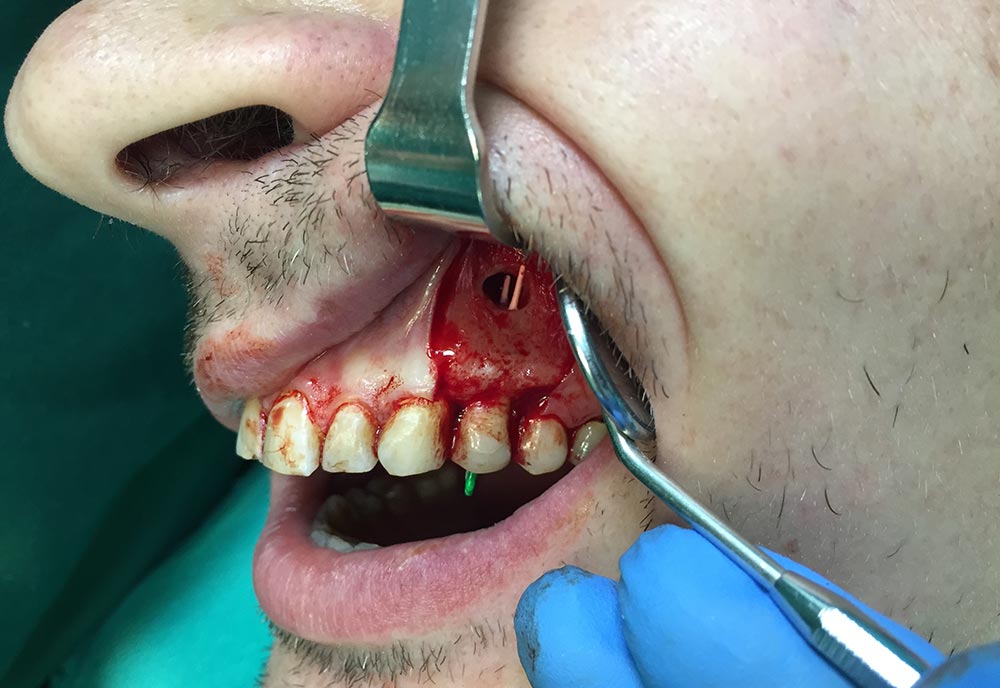Apicoectomy
Apicoectomy or tooth root resection is an oral surgical procedure to remove the infected tip of the tooth root (apex) together with the pathological process.
When is an apicoectomy necessary?
In the case that a periapical lesion develops on the tooth (process, cyst, and granuloma) and when the endodontic treatment of the tooth roots does not give results, resection of the tooth root is performed. Endodontic therapy is sometimes not possible due to curvature of the roots or blockage of the root canals, but also due to the installation of an endodontic stake.
Accordingly, an apicoectomy does not only mean the removal of the tip of the tooth root, but also the surrounding tissue affected by the infection, which, if left untreated, can develop into a cyst.
An apicoectomy is the only way to treat complications of teeth with necrotic pulp, and only if there is no possibility of tooth revitalization. Therefore, the goal of this surgical procedure is to save a tooth that would otherwise have to be extracted.

Performing apicoectomy
The intervention usually lasts between 20 and 60 minutes, whereby the position of the tooth and the complexity of the structure of its roots play a significant role. The procedure is very simple and consists of a small incision on the alveolar mucosa, which is pulled back to reveal the bone. Then an opening was made in the bone so that the root and the pathological process could be seen.
Additionally, it is followed by the removal of the apex together with the pathological process. Subsequently, the root canal of the tooth is ortho-gradely or retrogradely filled and hermetically sealed. On that occasion, the gingival flap is also returned. Finally, the wound is sutured.
Like many other procedures in the field of oral surgery, an apicoectomy is not painful either thanks to local anesthesia and analgosedation if necessary.
Root resection is generally a permanent solution and the biggest risk is that the operation will not succeed, which in that case means that the tooth must be extracted.
Postoperative course
After this intervention, the patient can return to his usual work activities after only a few hours if they do not require physical effort.
However, it is advised to rest at home for 2–3 days and change the cold compresses on the outside where the intervention was performed.
